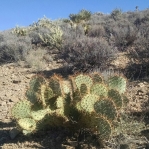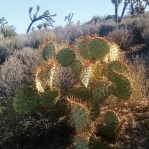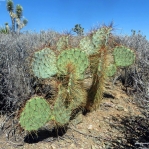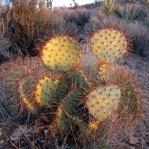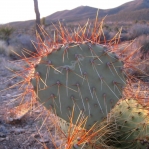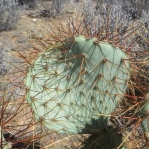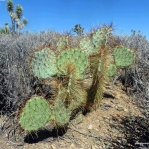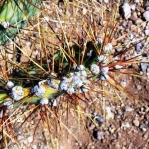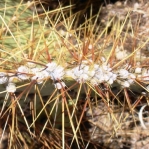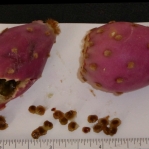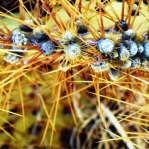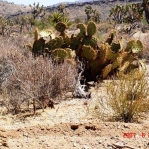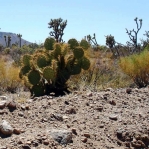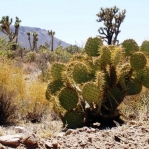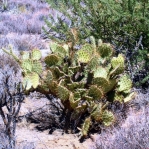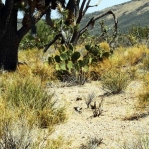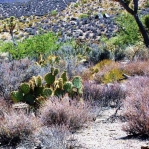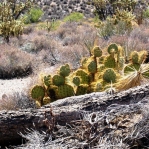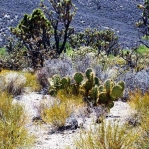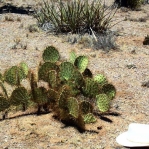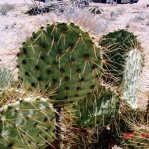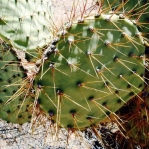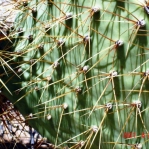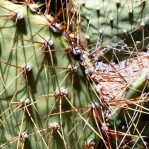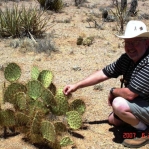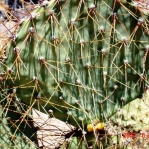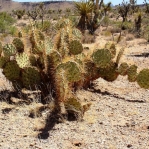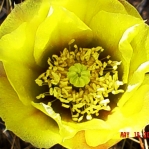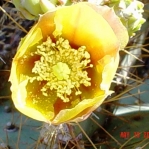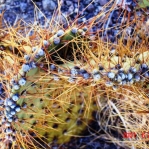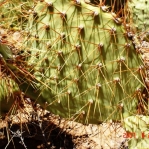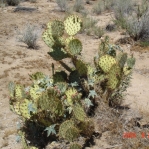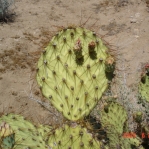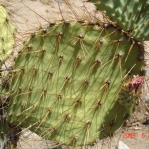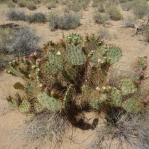
Griffiths, Bulletin of the Torrey Botanical Club 43: 88, 1916
Herbarium; Herbarium; Herbarium; Herbarium; Herbarium; Herbarium; Herbarium; Herbarium
See O. phaeacantha, a proposed ancestral species.
See O. chlorotica chlorotica, a proposed ancestral Opuntia.
Original Description
What is Opuntia curvispina?
Opuntia curvispina is an interesting prickly pear cactus mentioned in the literature under two different spellings, curvospina and curvispina. The original spelling by Griffiths was curvospina. The apparent hybrid origins of O. curvispina are discussed in the cited paper (at the link).
Details
Very old plants of this prickly pear might be described as arborescent to over 1.3 m tall, but such are not commonly encountered. O. curvispina is usually shrubby with a compact or rounded crown. Pads of this Opuntia are generally round or nearly so and 10-22 cm in diameter, but they may be obovate. There are multiple spines per areole. The largest spines are yellow or brown-yellow, and short spines may be whitish. Longest spines may be 3-6 cm long. The spines spread in all directions.
Flowers are yellow and 6-7 cm in diameter, there may be a bit of red in the center of flowers as they age throughout the day. The red is never prominent. The filaments are yellow and the style is white. The stigma is pale and large appearing. The fruit is dull-red on the outside with an abundant bloom. The rind is greenish and the pulp is nearly colorless. Fruit is oval 3.5-5 × 4.5-5.5 cm and slightly or deeply pitted.
O. curvispina is tetraploid.
Other Notes
O. curvispina has been described as a nothospecies (O. ×curvispina). This prickly pear is proposed to be a hybrid Opuntia derived from a cross of O. chlorotica chlorotica with O. phaeacantha, and perhaps it was originated that way in the distant past. If it originated as a hybrid there is no specific reason to assume O. phaeacantha was one parent because other small-to medium-sized species may have been involved, and they have not been investigated.
In any event, these prickly pears constitute a self-reproducing and widespread group of cacti and are not a nothospecies. Herein, we consider O. curvispina to be a discrete, established Opuntia species. O. curvispina is found in Arizona (greater Kingman area and north) and adjacent portions of Nevada and California (it has been called the Searchlight Opuntia). It is often found in deep soils. The authors have observed it growing in dry washes alongside Yucca brevifolia north of Kingman, Arizona. The plants have a “look” reminiscent of O. chlorotica chlorotica, but they are also quite different, bushier (generally without a trunk), and smaller. They also clearly seem related to O. martiniana.

